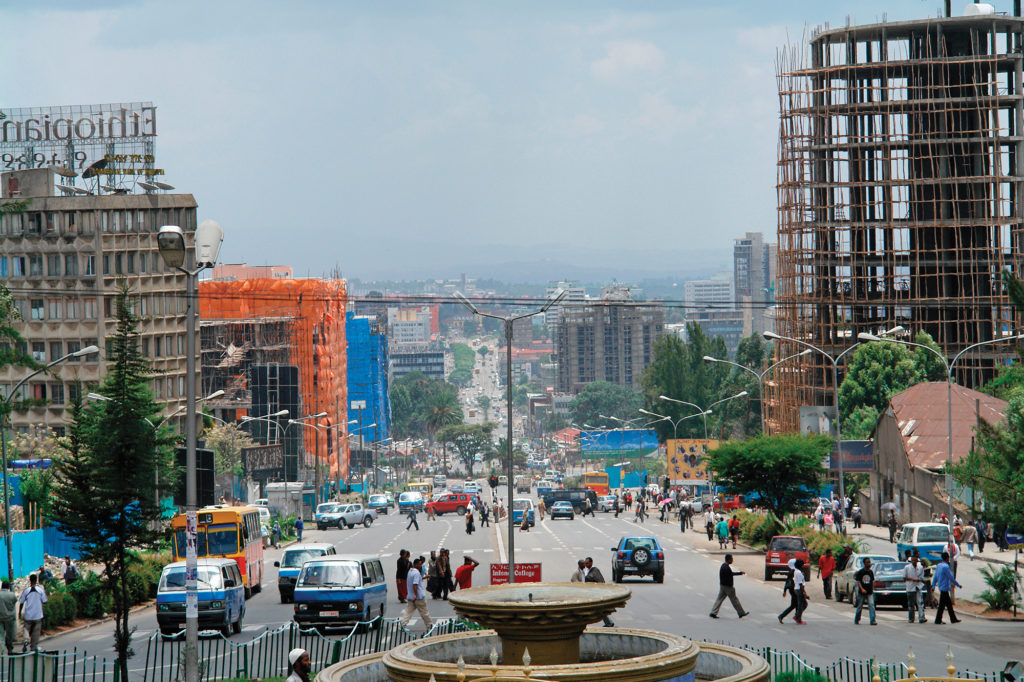
Ethiopia was once the face of poverty and hunger; today, its population is booming, its economy is among the fastest-growing in the world, and the skyline of its capital, Addis Ababa, is crowded with cranes and construction sites.
It’s a stark turnaround for a nation that, in the mid-1980s, lost half a million people to famine and whose progress has for decades been hampered by animosity with its neighbors and internal political instability.
A government plan to make Ethiopia a middle-income country by 2025 and massive state-funded infrastructure and development projects are credited with sparking the recent progress. One of the country’s most ambitious initiatives is a goal of achieving 100 percent access to electricity by 2030, and the government has hired NRECA International to provide its national electrification plan. Currently, only 23 percent of the country’s 100 million people are connected.
“There has been progress, and the electrification program is now focused on connecting households and businesses instead of just public facilities,” says Dan Waddle, senior vice president for NRECA International. “Like many countries in the region, the government of Ethiopia has begun to engage a more aggressive off-grid approach, one that will be needed to reach the more remote regions of the country.”
Waddle says Ethiopia’s focus on electrification and other infrastructure is part of a turning tide in Africa, where an increasing number of leaders are seeing the connection between bringing power and economic productivity beyond population centers to the countryside.
“Past electrification efforts throughout Africa would inevitably fall short or stall for lack of financing and political will,” Waddle says. “Now, we’re seeing the emergence of strong leadership in several African countries where there is increasing understanding of the widespread economic benefits of universal access.”
Waddle says the positive developments have spurred NRECA International, which has helped bring electricity to more than 120 million people in 43 developing countries, to bolster its work with partners throughout Africa.
SE4ALL and Power Africa
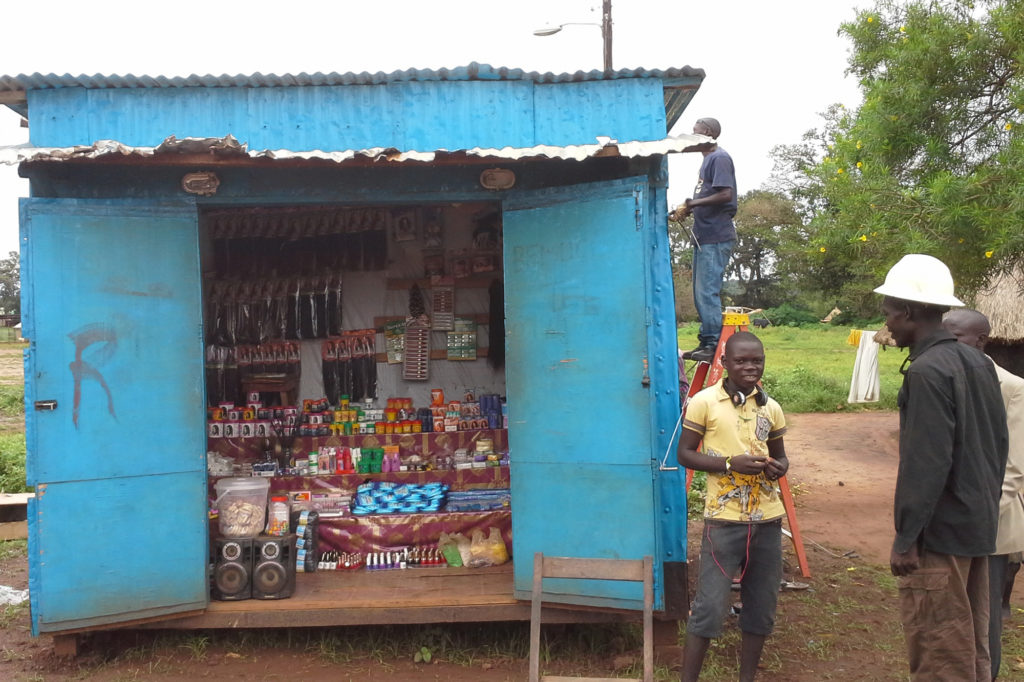
A cornerstone of electrification efforts in Africa and throughout the developing world is the United Nations’ Sustainable Energy for All (SE4All) initiative. Begun in 2011, its goal is to extend modern energy services by 2030 to the 1.6 billion people on Earth without access to power.
More than 100 donor countries have signed on to SE4All, providing financial or in-kind contributions or working on tailored national strategies and investment plans.
“Energy is the golden thread that connects economic growth, increased social equity, and an environment that allows the world to thrive,” said then-U.N. Secretary-General Ban Ki-Moon at the initiative’s launch.
The program has helped spark electrification efforts in dozens of countries. But a U.N. progress report in 2015 found that while there have been notable advances in South Asia, work to increase access in Africa has struggled to keep pace with population growth. About 600 million people in sub-Saharan Africa are still without power, the report notes.
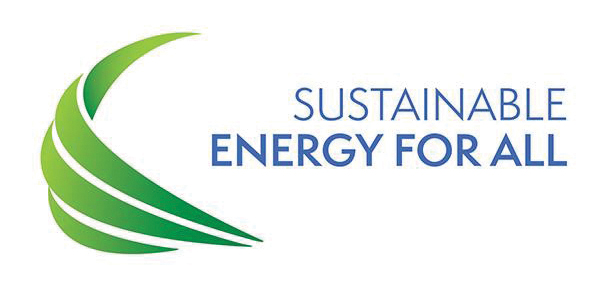 A majority of the 44 SE4All recipient countries in Africa have completed assessments of their energy sectors and identified challenges to achieving the 2030 goals. More than half have defined strategies to overcome those barriers and to finance rapid electrification programs. “SE4All laid the groundwork for countries to take stock of what steps they need to take to achieve universal access,” Waddle says. “Many partnerships have formed and important discussions have taken place to create the frameworks needed to move forward.”
A majority of the 44 SE4All recipient countries in Africa have completed assessments of their energy sectors and identified challenges to achieving the 2030 goals. More than half have defined strategies to overcome those barriers and to finance rapid electrification programs. “SE4All laid the groundwork for countries to take stock of what steps they need to take to achieve universal access,” Waddle says. “Many partnerships have formed and important discussions have taken place to create the frameworks needed to move forward.”
Power Africa is the flagship U.S. government-led energy initiative created in 2013 with the goal of doubling access to electricity in sub-Saharan Africa by 2030. The Electrify Africa Act, supported by NRECA and signed into law in 2016, codifies and expands the Power Africa initiative and America’s commitment to increase access to electricity in Africa.
Power Africa, which is coordinated by the U.S. Agency for International Development (USAID), pairs more than 130 public and private sector partners with technical, legal, and financial experts to facilitate generation and transmission project development and access programs.
Since the initiative’s launch, more than 15 million people in Africa have gained access to electricity, and some 5,500 MW of U.S. government- and partner-supported power projects there have been completed, says Andrew Herscowitz, Power Africa coordinator.
Read More: NRECA and USAID – A 50-Year Partnership
The U.S. Agency for International Development (USAID) was barely a year old on November 3, 1961, when NRECA won its first contract to bring the cooperative model to overseas electrification work.
The contract-signing ceremony was to have been at the State Department, but President John F. Kennedy personally requested that the venue be moved to the Oval Office. Read more…
“Power Africa and its partners have created international momentum to meet the needs of the 600 million people in sub-Saharan Africa who don’t have access to electricity,” he says. “We have mobilized more than $54 billion in public and private capital and created business opportunities for U.S. companies while bringing light and power to millions.”
Waddle says the renewed emphasis on powering Africa is promising, but he cautions that success will require practical solutions that have long-term impacts.
“To reach people in remote areas, electricity expansion plans must balance extending power grids with support for off-grid energy systems and small-scale lighting technologies like home solar systems,” he says.
Over the past 10 years, NRECA International has engaged in electrification projects with the governments of nine African countries: Benin, Ethiopia, Ghana, Kenya, Liberia, Sierra Leone, South Sudan, Tanzania, and Uganda.
“NRECA International has been doing work in Africa for a long time,” Waddle says. “But we haven’t before seen political and economic resources being dedicated to electrification in multiple countries the way we’re seeing today. It’s a great opportunity that we will be working hard to capitalize on.”
Ambitious Plans
Kenya
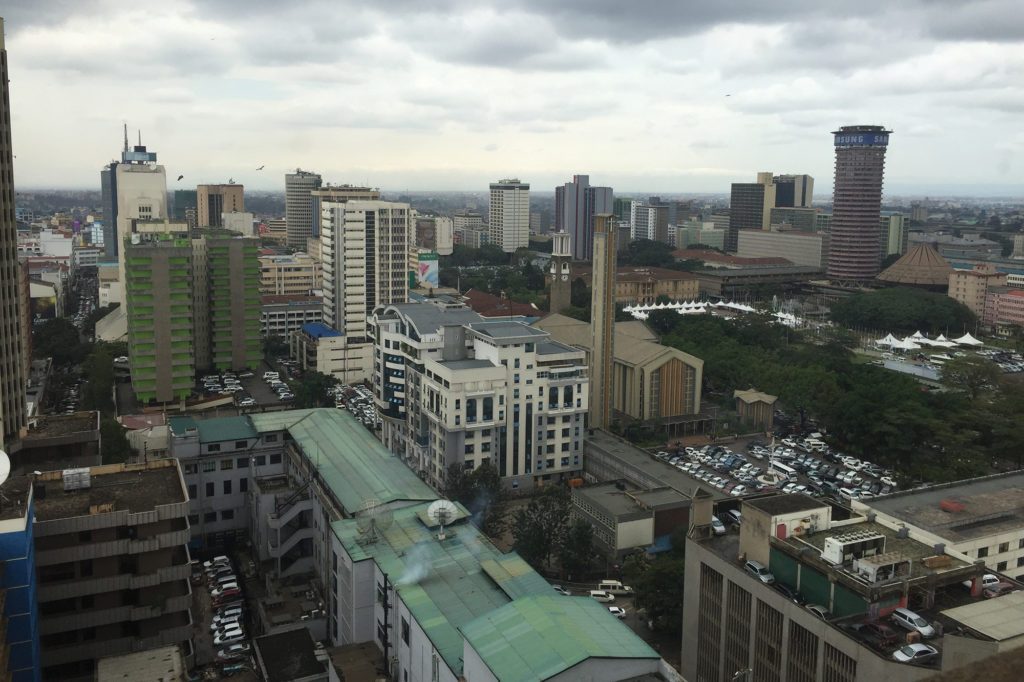
In 2010, Kenya completed a much-heralded rewrite of its constitution, and within the document’s 200 pages is an explicit commitment to bring the quality of infrastructure in “marginalized areas” up to the level enjoyed by the rest of the nation. The government has since set an official goal of full access to electricity by 2020. About half of Kenya’s 48 million people are currently connected.
“The government of Kenya sees energy as one of the essential services to achieve accelerated rural economic development,” Waddle says. “The official access rate right now is 57 percent, so achieving full access in three years will be extremely challenging.”
One program that shows promise is Kenya’s Last Mile Connectivity Project, which seeks to connect all households located within 600 meters of a transformer. A 2016 U.N. report done as part of the SE4All initiative predicts Last Mile could connect up to a million households per year over the next five years.
Waddle says Last Mile is an excellent start, but reaching Kenya’s more rural populations will require a broader strategy.
“These connections are happening in areas that are located very close to the power grid or are already served by Kenya Power [the national utility],” Waddle says. “We still need to make sure we can reach those who live many miles beyond the grid.”
As part of a World Bank effort, NRECA International is preparing a national electrification strategy for Kenya that will help identify on-grid and off-grid opportunities for government investment, private sector investment, and public-private partnerships.
“With careful planning, Kenya is well-positioned to achieve full access in the coming years,” Waddle says.
Photo Gallery | NRECA International in Nairobi
Liberia
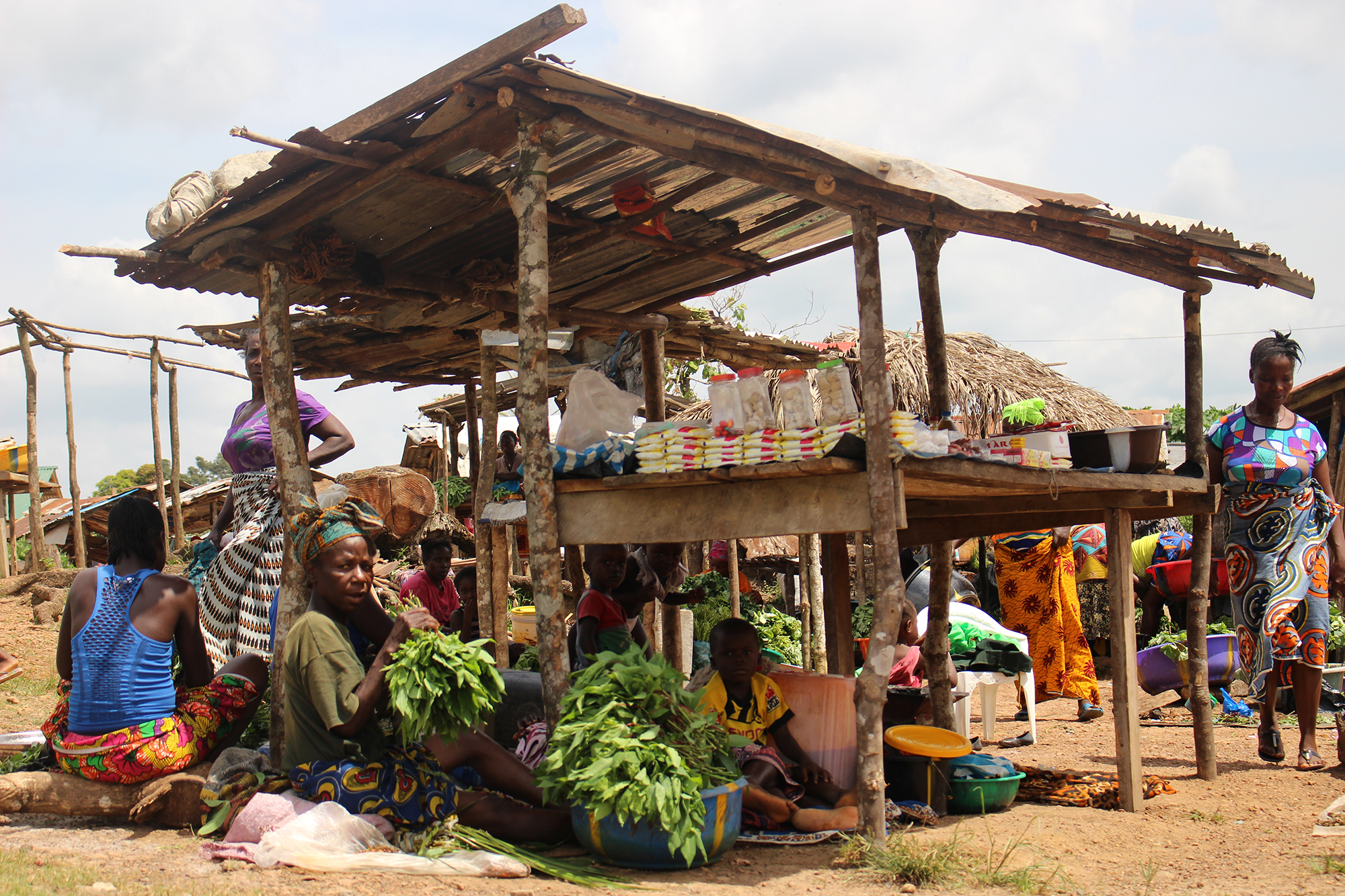
In 2014, Liberia was on the road to recovery from a 14-year civil war when it was hit by a devastating Ebola epidemic. The crises have left the country with a crippled economy and one of the lowest electrification rates on Earth, with less than 3 percent of the population connected to the grid.
Nevertheless, Waddle says, a proven government commitment to building infrastructure means there are many signs of hope in the stricken nation.
Liberia Electricity Corporation, the national electric utility, has made significant strides in building distribution infrastructure in and around the capital Monrovia, he says. The recent completion of several generation plants should, he adds, provide capacity for Monrovia as well as regional capitals and rural villages.
In addition, NRECA International is implementing a USAID/ \Power Africa strategy in Liberia called “Beyond the Grid (BTG): Electrifying Liberia’s Population Centers.” The plan focuses on extending grid infrastructure and off-grid resources to strategically important towns. To date, two rural communities have inaugurated electric systems powered by solar and biomass, and the BTG program managed by the NRECA International team is working on multiple other projects.
“In Liberia, NRECA International is supporting Power Africa to help power thousands of new customers, rekindle economic development, and promote greater socio-political stability in a country that was destroyed by war and suffered setbacks caused by the Ebola outbreak,” Waddle says. “The road to recovery will be long and challenging, but recent progress is promising.”
Uganda
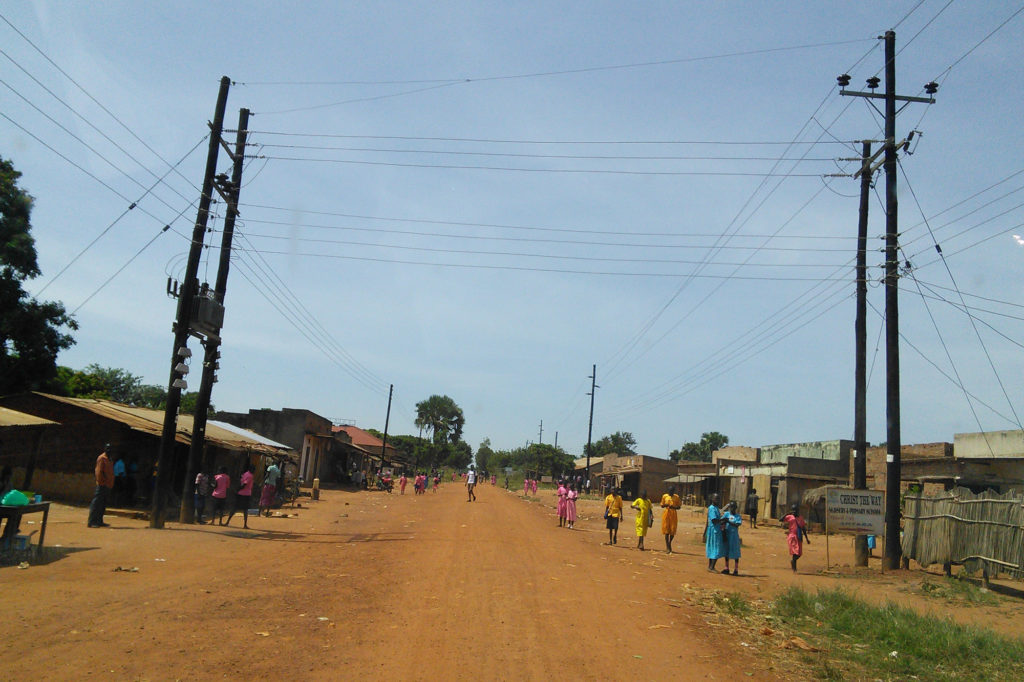
Uganda suffered through decades of dictatorial rule and civil unrest until the mid-1980s, when a period of relative stability began. Since then, government policies aimed at boosting private investment have helped economic growth remain high.
As part of its participation in SE4All, Uganda has set a goal of full electricity access by 2030. Currently about 26 percent of the country’s population of 35 million are connected.
Uganda’s national electrification plan, designed by NRECA International, divides the country into 13 rural service territories and emphasizes partnerships between the government and several newly formed rural utilities.
“Over the last several years, we’ve had a very productive partnership with Uganda,” Waddle says. “Their willingness to adopt new ways to achieve not just grid expansion but increasing access to rural areas has enabled us to design a national electrification program that includes grid, off-grid, and home solar systems.”
In 2014, a team from the Uganda Rural Electrification Agency traveled to Orlando, Fla., for NRECA’s Annual Meeting. While there, they met with U.S. electric cooperative leaders and discussed ideas on how to implement their new national electrification plan.
The Case for Africa
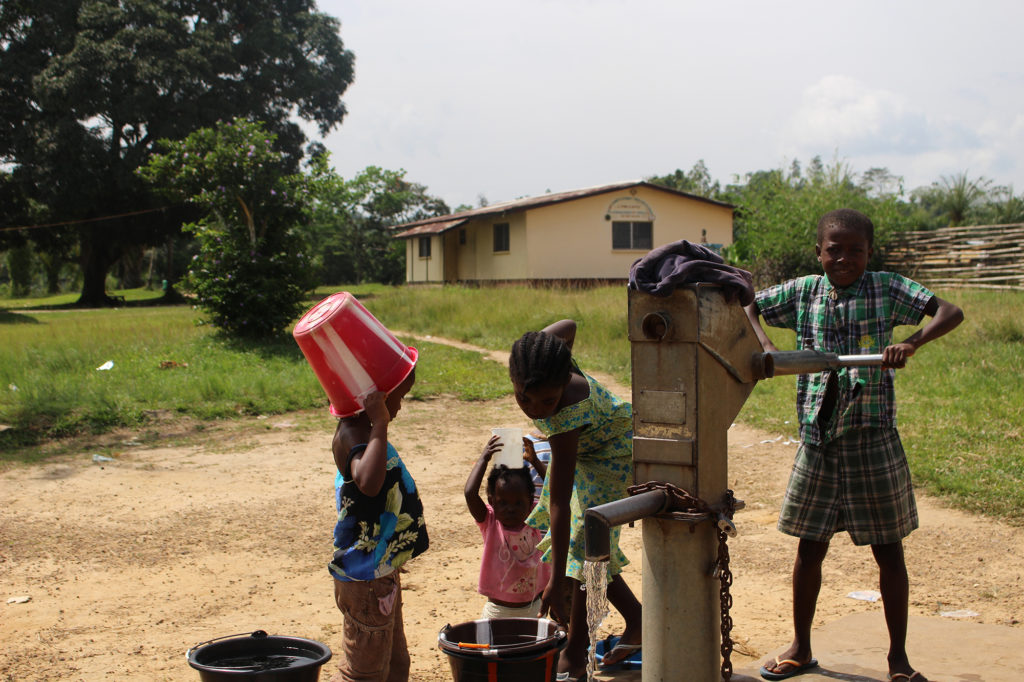
While recent progress in Africa is encouraging, Herscowitz says, it is in the global community’s interest to continue making the case for a sustained electrification effort there.
“Energy access is an essential component of national security and economic development,” he says. “People need electricity for lighting, cooking, heating, health, education, and to tap their full potential in economic opportunity and employment. Time and again, failure by states to meet basic needs of citizens leads to unrest and instability.”
Martin Lowery, NRECA executive vice president for member and association relations, says the connection of America’s electric cooperatives to rural electrification and NRECA’s deep ties with USAID (see “USAID” sidebar) make it well-suited to help in Africa.
“NRECA’s partnership with USAID continues to this day and has resulted in a dramatic expansion of rural electrification throughout Latin America, Asia, and now sub-Saharan Africa that has improved the standard of living for millions,” he says. “The end result of this important work is not dissimilar to what was accomplished in rural America in the 1930s. This ended rural isolation, increased access to markets, and brought health services, telephony, water access, water quality, and education.”
Ron Schwartau, chair of the NRECA International Committee and president of Nobles Cooperative Electric in Worthington, Minn., traveled to southern Sudan in 2008 with a team of volunteer co-op linemen and NRECA International staff. He says the trip, part of a USAID effort to help the country rebuild and stabilize after a lengthy civil war, reinforced for him the global impact of bringing power to developing nations.
“Our work in Africa continues to be important because we are working to change a future need in health care, education, social welfare,” Schwartau says. “There is such a disparity of opportunity, and if communities in African countries can change that equation one thing at a time, we can and will benefit from it in the future.”
This story was originally published in RE Magazine.